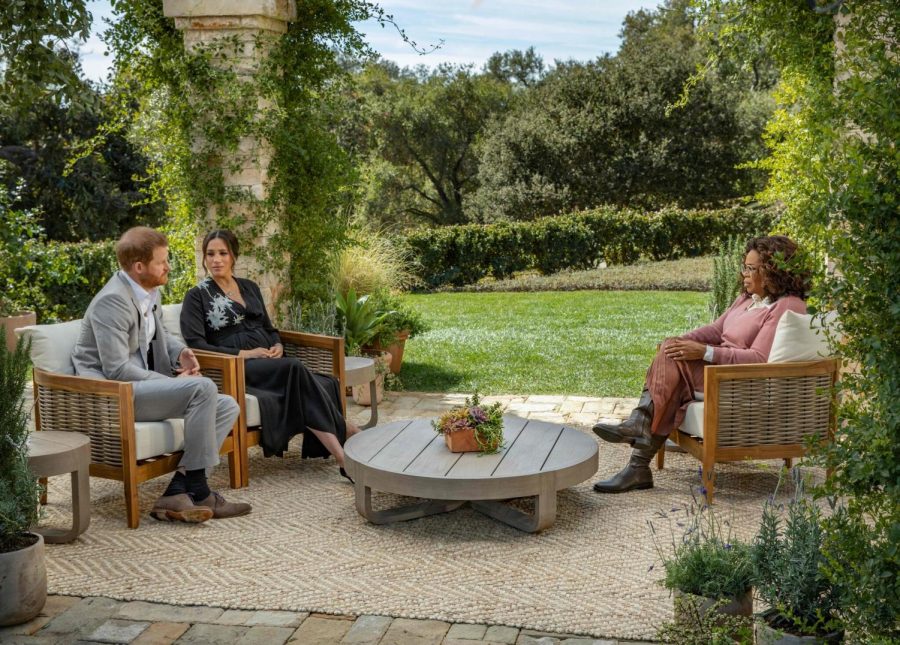Meghan Markle, the British Monarchy, and the Role of Society in Causing a Scandal
There are two stories. In one, the walls of Buckingham Palace have been shielding years of racism, maltreatment, and scandal on the part of the royal family. In the other, a former actress seeks to wreak havoc upon the reputation and perception of her in-laws, the British monarchy. These stories, brought about by the Duchess of Sussex’s explosive interview with television personality Oprah Winfrey, are essentially controversial and contradictory to each other. They have become the focus of global attention, the source of growing hostilities within the British aristocracy, and the cause of further debate over what happens behind those wrought iron gates.
Foreign to the English monarchy and the sequence of events that preceded the scandal, I observe the media coverage allotted to the issue relatively unbiased, although influenced by the cracked prism of gender narratives and female comparison in the media. Fed a steady diet of supermarket tabloids and unrealistic movie plots that pitted women against each other, I have grown up in a culture that tells females the limitless ways they can get it wrong: ‘it’ being their appearance, behavior, or overall likeability. The idea of the perfect woman is an unattainable standard created by society itself and reinforced through gender comparisons that seek to facilitate insecurity and self-loathing.
I recall a list that was published this previous year titled “Ugliest Actresses/Celebrities”. Crafted by the popular website IMDb.com, it quickly became the focus of an incensed social media frenzy, in which users and outlets sought to acknowledge this inexcusable behavior as an example of the popular societal trend of comparing women. New York Times journalist Alexis Soloski commented on the issue in response to a National Enquirer article that compared the knees of famous stars and deemed the only acceptable ones to be those of TV host Mary Hart. Knees, clothes, significant others, careers– apparently everything is now up for discussion.
It was with this in mind that I watched Meghan Markle and Prince Harry speak with Oprah about their decision to leave the United Kingdom as a result of the mistreatment they endured for two years, the majority of which was directed at Meghan. They married in 2018 after having dated for two years. Six months later, the relentlessly-negative media coverage began, accompanied by the palace’s refusal to refute false narratives. She was criticized for her eating habits, style choices, family decisions, and other ridiculous aspects of her behavior. It was in the last few minutes of the interview that Meghan addressed the effect that all of this had on her mental health and on her and Harry’s later decision to leave the royal family. While her husband had attempted to ease this external pressure, Meghan had been told that she could not seek psychiatric help because it wouldn’t be good for the institution. She was on the brink of suicide.
Entering the royal family through marriage in the last decade, Kate Middleton and Meghan Markle, spouses of the royal Princes, were pitted against each other instantaneously as magazines analyzed even the smallest movement for any hint of tension. Gossip headlines revealed the blatantly partial attitude of the media toward Kate and a consequent disdain for the Duchess of Sussex. In March of 2018, Mail Online published an article titled: “Not long to go! Pregnant Kate tenderly cradles her baby bump while wrapping up royal duties ahead of maternity leave…”. In January of 2019, the same media outlet titled an article: “Why can’t Meghan Markle keep her hands off the bump? Experts tackle the question that has got the nation talking: Is it pride, vanity, acting – or a new-age bonding technique?” This has appeared to be an evident pattern in the tabloids, which has adopted the habit of utilizing one woman’s characteristics or actions to belittle that of another. An article about Kate reads “Kate’s stylish coat co-ordinated perfectly with the Queen”, while its counterpart about Meghan read “How Meghan Markle’s confusion over a hat nearly got her into big trouble with the Queen.”
Women compete, compare, undermine, and undercut one another in a vicious game of manipulation and deprecation. It remains the prevailing notion of how we interact, and we all do it. It begins with the grade school division of classmates into popular and otherwise, into ‘haves’ and ‘have-nots’. High school brings relationships and academic competition for college entry, after which we continue to express indirect aggression toward other women to improve our own self-perception. My theory, however, is that it’s not our fault.
It’s easy to place the blame on the general culture of societal comparison, but the evidence is all there. Female musicians are compared by the media, and those who acknowledge the talent of their colleagues are praised as feminist heroes. Actresses are ranked based on physical appearance and are scrutinized on every possible platform. Even the British Duchesses are compared for their clothing choices in an ongoing discussion on who is most suited for the crown. Beyond the internal struggle to defeat our insecurities, we are faced with a world that normalizes and facilitates a competitive atmosphere among women. The results, evidently, are detrimental.
“We all know what the British press can be like, and it was destroying my mental health. I did what any husband and what any father would do — I needed to get my family out of here.” That was Prince Harry in a casual interview with James Corden, describing the extent to which the toxicity of the tabloids affected his family. Meghan reiterated the point a week later, saying that the constant criticism of her every move drove her to the point of suicide. And because it is a normal thing, the comments went unnoticed and Meghan remained in perilous condition. The revolting attitude of the British press almost cost a woman her life, and it is an indication that something needs to change. Not only in England and not only concerning those in the public eye– but as a collective community working toward female empowerment and cooperation.

Ana Clara Monaco is West Morris Mendham sophomore. She sprints for the Mendham Track & Field team and participates in multiple clubs. Outside of school,...

